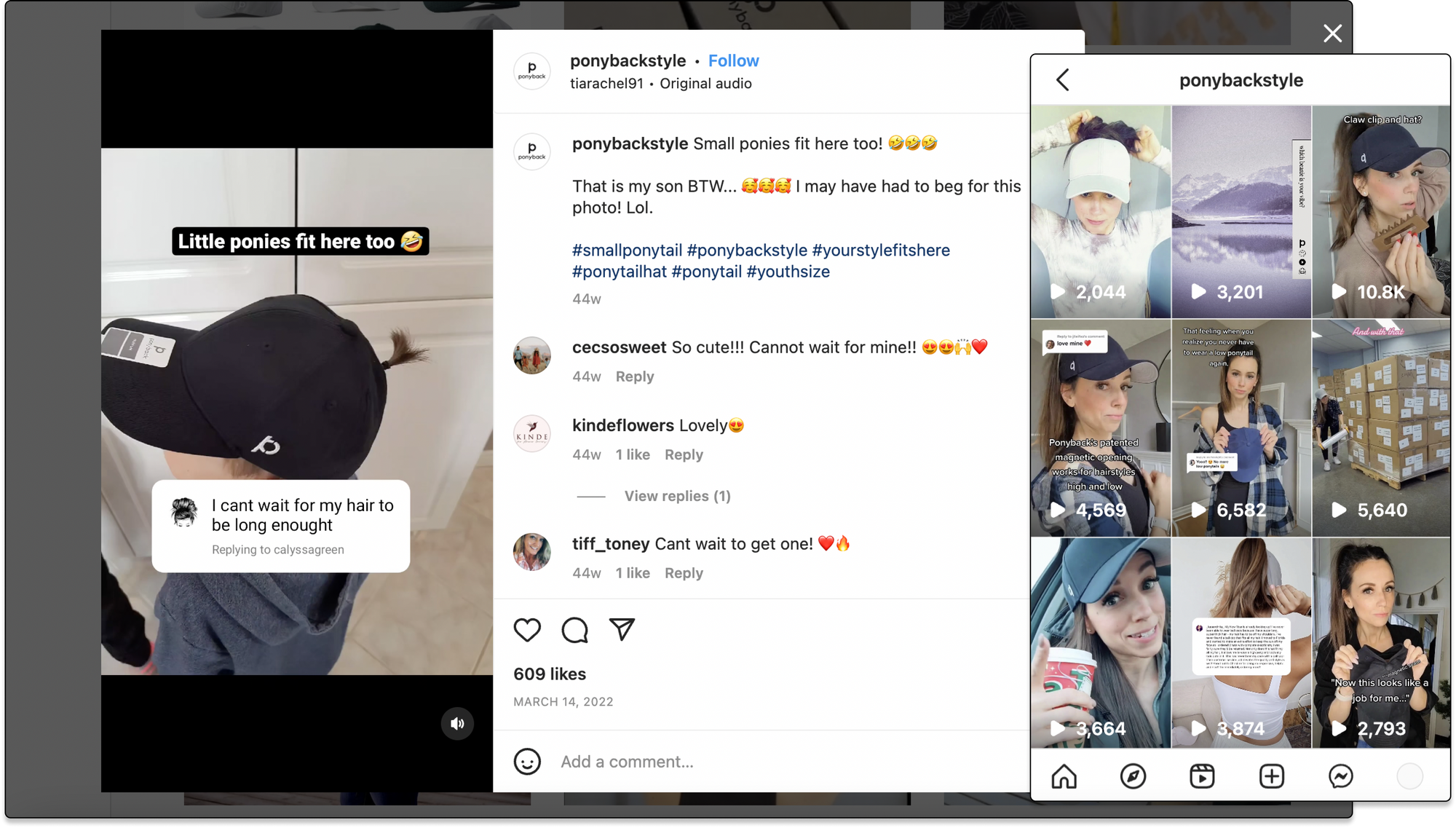 All blog posts
All blog posts
How Ponyback Hats Gathered 1,100+ Reviews While Building a Viral Brand from Scratch
Ponyback Hats founder Stacey Keller knew the importance of great reviews when she was getting ready to launch her brand of Ponytail friendly hats in early 2020. We recently got the chance to catch up with Keller to learn more about her experience producing a product, building a brand through social media, engaging her audience & of course, how product reviews fit into it all.
Finding inspiration at home
Ponyback's hats and beanies feature a patented hidden seam that opens to accommodate a ponytail or messy bun. Like many DTC founders, Keller found inspiration in everyday life challenges. As a parent to three young boys, Keller found herself constantly reminding them to wear a hat when playing outside.
Then one of her sons asked her why she wasn't wearing a hat.
"I couldn't find one that I wanted to wear. I wanted a cute hat of my own, not one of my husband's extras. I wanted something that was made for me," Keller said.
It was the search for a hat that she would wear that led Keller to her "ah-ha" moment. Not being able to find a hat she could wear with her hair up, Keller decided to make her own. She took a fitted baseball hat and cut the back seam to make a hole for a ponytail. Taking inspiration (and parts) from her sons' toys, Keller disassembled a magnetic building toy and sewed its small, powerful magnets along the seam. The hat was the prototype for what would become the Ponyback hat.

Building an audience
Keller said she knew customer education and brand building would be critical to making her first sales as Ponyback hats moved from prototype to final product. While she had limited experience with content creation at the time, she decided to jump head-first into creator mode to build an audience.
Keller said she was initially curious if the social content would connect with people but then quickly saw the impact of each post on Instagram and TikTok. She added that her videos helped Ponyback Hats stand apart from the competition.
"Content can be very powerful and it has made a huge difference for us. I think that they (competitors) just didn't have the same approach and the same willingness to be as close to the customer," Keller said.

As Keller built an audience on Instagram and TikTok, the first order for hats was at her supplier. Keller went to work using Shopify to build her storefront, and as luck would have it, Ponyback is based in the same town as our team. She had heard good things about Junip from other ecommerce brands, and we connected to get Junip set up on her store front in time for Ponyback's official launch in December 2020.
Turning a brand audience into champions
One of Keller's goals with Ponyback's social content is to inspire customers to post how they wear their hats—and to give reviews to help convert future customers. Keller said the focus isn't only on positive reviews either. Their team wants to build a long-term relationship with their customers, and providing excellent customer service is critical.
"We are a brand who very much values having a customer relationship. What I love about Junip is how easy it is to respond to reviews"
-Stacey Keller, Founder @ Ponyback Hats
While Junip can automatically publish positive reviews, Keller added that she wants to ensure her customers that their words have been seen. Over the last year, Keller has added staff to help respond to reviews—both positive and negative.
"Responding publicly to reviews is part of our workflow. I feel like if you're somebody coming to this site and you only see responses to the negative reviews, what does that say about your brand? I think it helps convert when you see a brand that's responding to all of the reviews," Keller said.
Powering internal workflows with reviews
The Ponyback Hat lineup has grown from one fit to four versions and is available in youth sizes. Keller said their roadmap is heavily influenced by the conversations that happen in customer reviews.
"The reviews have been a really great way to get feedback—both negative and positive. It's very telling on what we need to improve on and what to prioritize," Keller said.

When Keller comes across a negative review, she often follows up personally to learn more from the customer. That feedback is then added to Ponyback's customer service workflow. She said that the review is often the first time a customer reports a concern or problem.
"In a lot of cases, they don't contact you at all. In these cases, it gives us a chance to capture why someone is unhappy and make an effort to fix it," Keller said.
Today
Ponyback continues to use their review section as a key channel to communicate with customers and make them feel heard. Not only has this contributed to an authentic relationship with their customers, but it's also earned Ponyback an average rating of 4.89/5 stars across 1,100+ reviews.




